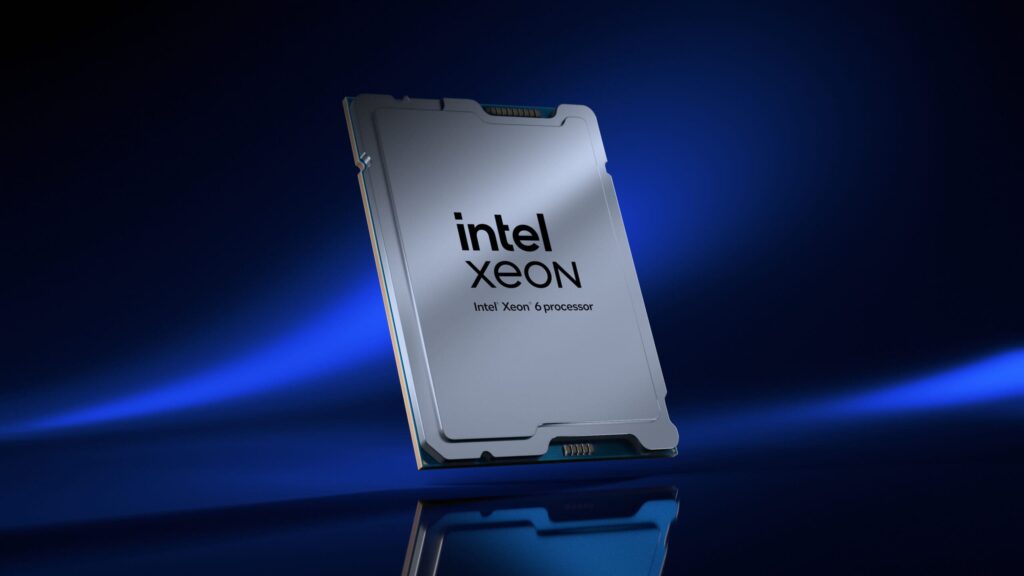Intel is preparing to make a significant leap in its data center processor lineup with the upcoming launch of Xeon 7 “Diamond Rapids,” expected in 2026. This new generation promises substantial improvements in performance, memory bandwidth, and computing capacity, positioning itself as a direct competitor to AMD’s future EPYC “Venice” processors based on Zen 6.
According to a leaked slide published by X86 is Dead & Back, the Oak Stream platform and Diamond Rapids processors will feature notable innovations such as up to 192 cores, support for as many as 16 DDR5 memory channels, PCIe Gen6, and a thermal design power (TDP) of up to 500 watts.
The internal architecture of Diamond Rapids is expected to include up to four compute tiles, each with up to 48 cores, totaling 192 high-performance cores per CPU. These tiles will be manufactured using Intel’s advanced 18A process, and will be complemented by two I/O tiles managing memory interfaces, PCIe 6.0, CXL 3.0, UPI 3.0, and additional PCIe 4.0 channels.
The CPU will utilize second-generation MRDIMM memory modules capable of speeds up to 12,800 MT/s, resulting in a theoretical bandwidth exceeding 1.6 TB/s. To put this into perspective, current Xeon 6 “Granite Rapids” CPUs reach a maximum of 844 GB/s, less than half that bandwidth.
Diamond Rapids will be supported by the new Oak Stream platform, designed for high-performance server markets, supporting configurations from one to four sockets (1S, 2S, 4S). It will include PCIe Gen6 compatibility, with options for 8 or 16 DDR5 memory channels, and will feature a new LGA9324 socket with over nine thousand pins to accommodate the high density and complexity of these CPUs.
Efficiency improvements are also a focus, with Intel promising significant gains in instruction performance for AMX (Advanced Matrix Extensions), including native support for TF32 and FP8 formats, increasingly used in AI and deep learning workloads.
One of the most notable aspects is the high power consumption, with a TDP of 500W, making Diamond Rapids one of the most power-hungry CPUs Intel has ever created. This value could rise in peak load situations, demanding advanced cooling solutions and high-end motherboards with sophisticated power regulation.
This reflects a broader industry trend where high-performance chips for AI, HPC, and servers scale both in power and consumption, as seen with platforms like NVIDIA Grace Hopper, AMD EPYC Bergamo, and AI accelerators from Cerebras and Tenstorrent.
The Xeon 7 Diamond Rapids will compete directly with AMD’s upcoming EPYC “Venice,” based on Zen 6 architecture, expected to feature up to 256 cores. AMD currently leads in core count and energy efficiency in the server segment, so Intel will need to differentiate itself with higher bandwidth ecosystems, improvements in AI acceleration, and better integration with technologies like CXL 3.0.
Although the official launch is scheduled for sometime in 2026, there is no confirmation that Intel has completed initial testing or “tape-in” for these chips, raising doubts about the project’s readiness. If the timelines hold, Diamond Rapids will be a key element in Intel’s roadmap to regain leadership in the server CPU market.
Filtered Specifications of Intel Xeon 7 “Diamond Rapids” (2026):
| Characteristic | Approximate Value |
|---|---|
| Cores per CPU | Up to 192 (4 tiles of 48 cores) |
| Manufacturing Technology | Intel 18A |
| Memory Support | DDR5 MRDIMM Gen2 (up to 16 channels) |
| Memory Bandwidth | > 1.6 TB/s |
| Socket | LGA9324 |
| PCIe Support | PCIe 6.0 and PCIe 4.0 (additional) |
| CXL Support | CXL 3.0 |
| TDP Power | 500W (and more at peak) |
| Possible Configurations | 1S, 2S, 4S |
| AI / HPC Acceleration | AMX with FP8 and TF32 support |
| Platform | Oak Stream |
| Expected Launch Date | 2026 |
In conclusion, Diamond Rapids and the Oak Stream platform represent Intel’s most ambitious push in years within high-performance datacenter computing. With impressive specifications on paper, the company aims to reclaim dominance against AMD and other emerging solutions in AI and distributed computing. However, the critical question remains: will these processors arrive in time to lead the market, or is it already too late?

